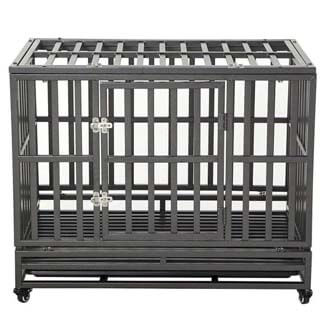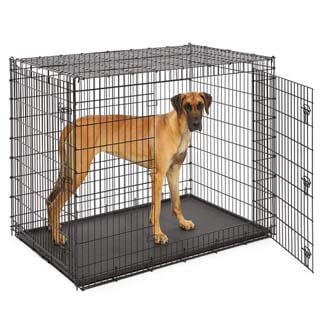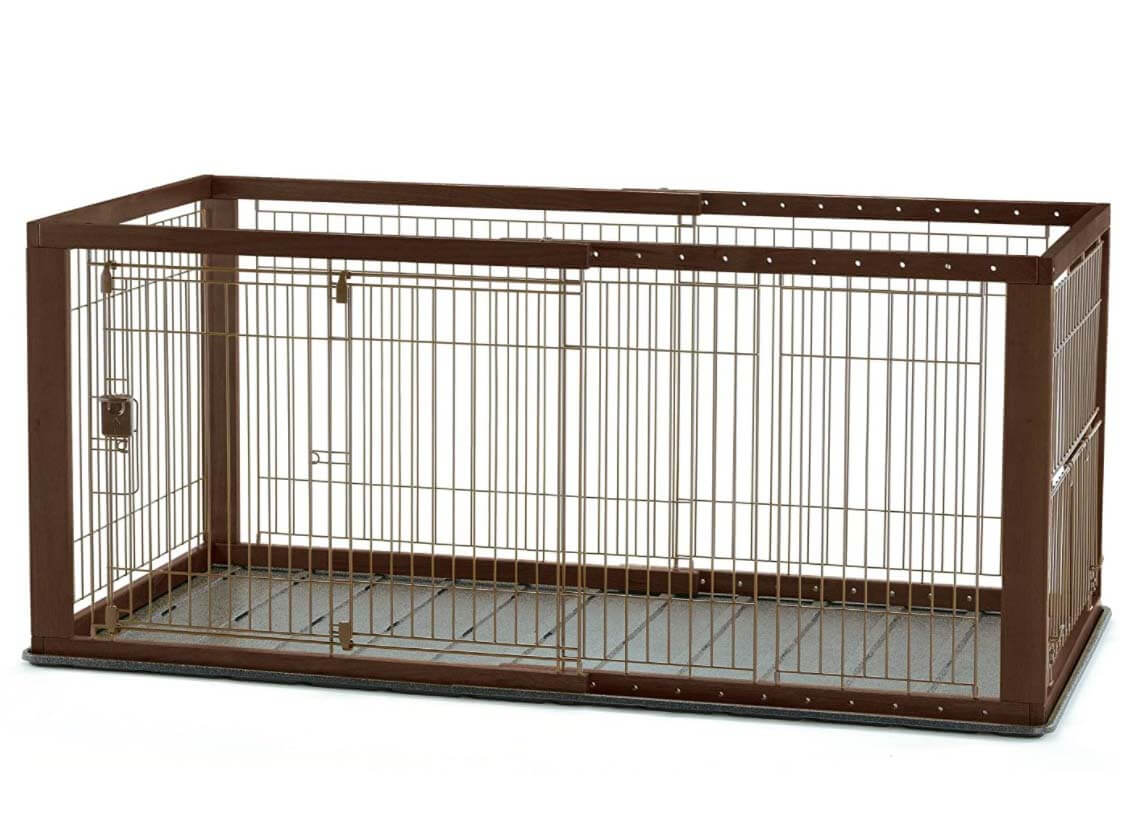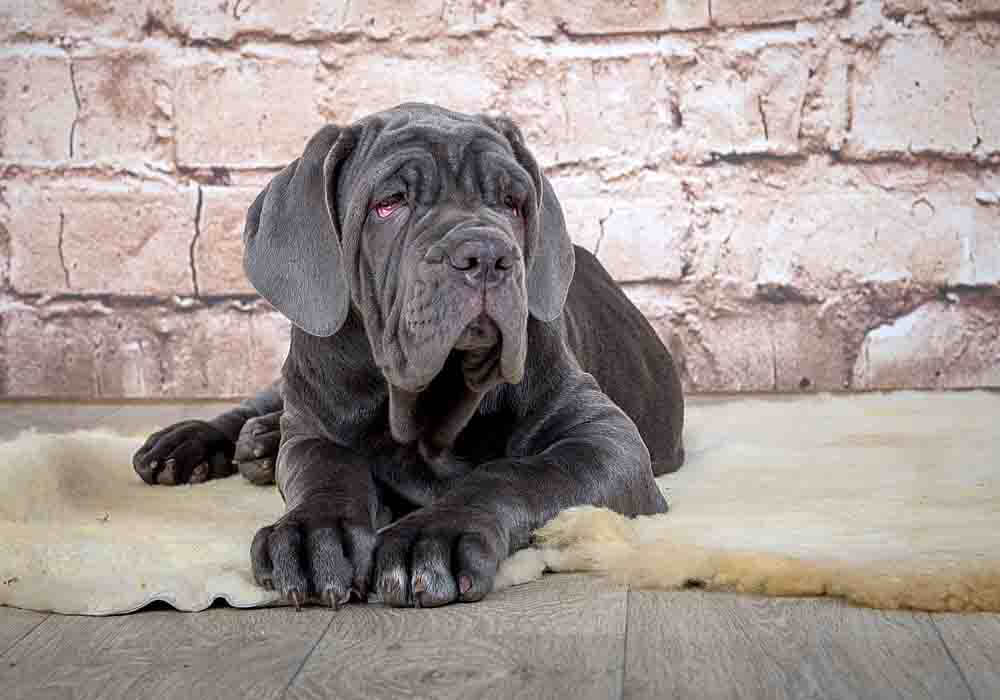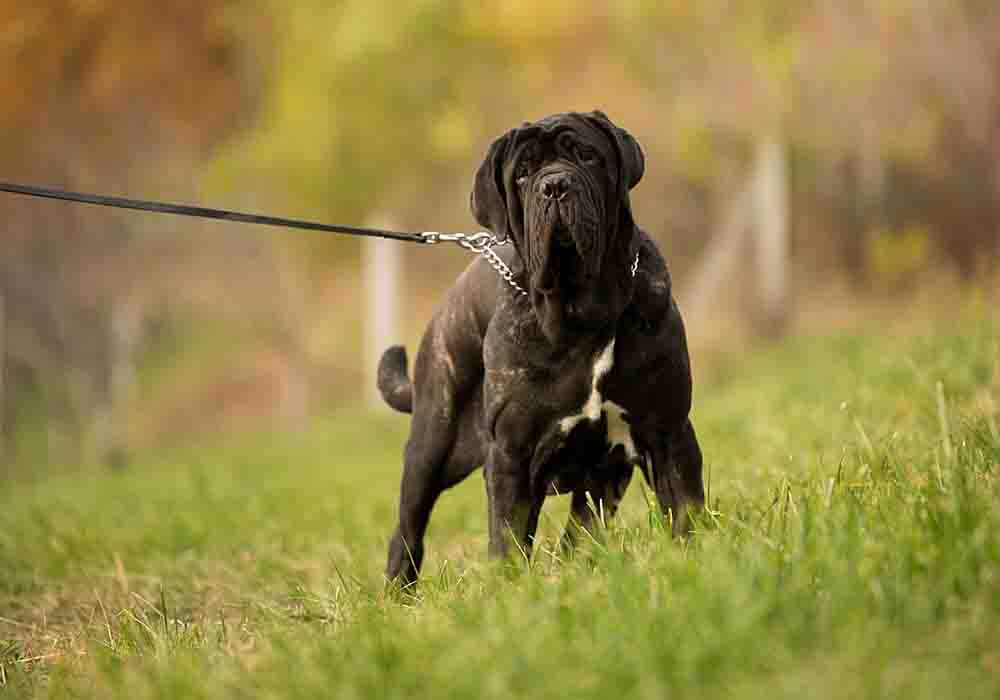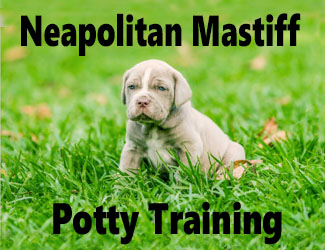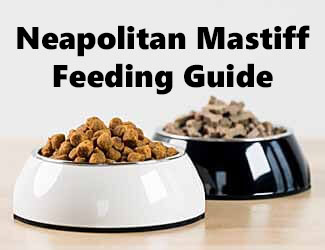Neapolitan Mastiff Crate Training
In 5 Easy
Steps
by Ken Alden
Crate training is invaluable for dog breeders and owners in a lot of ways. You can use it for potty training, teaching rules of the house, and even for transport. Despite its various applications, a lot of Neapolitan Mastiff owners don't handle crate training properly.
Neapolitan Mastiff Crate Training...In 5 Easy Steps
- Introduce the crate gradually until your dog becomes comfortable.
- Create a positive association with the crate.
- Close the door while your dog is eating.
- Extend crate time beyond mealtime.
- Keep things normal every time you arrive home.
You don't have to do hardcore training to make your dog feel comfortable with crates. However, this breed has below average trainability, so you may have to follow a strict routine for months to perfect it. You'll also need to pick the right crate size to make your training more effective. So let's start with that...
Pro-tip: Ever try lifting a Neapolitan Mastiff? Their weight can hurt not only your back but their joints when they hop down from cars, sofas or even your bed. To protect your back and theirs check out the best Mastiff ramps on Amazon.com now.
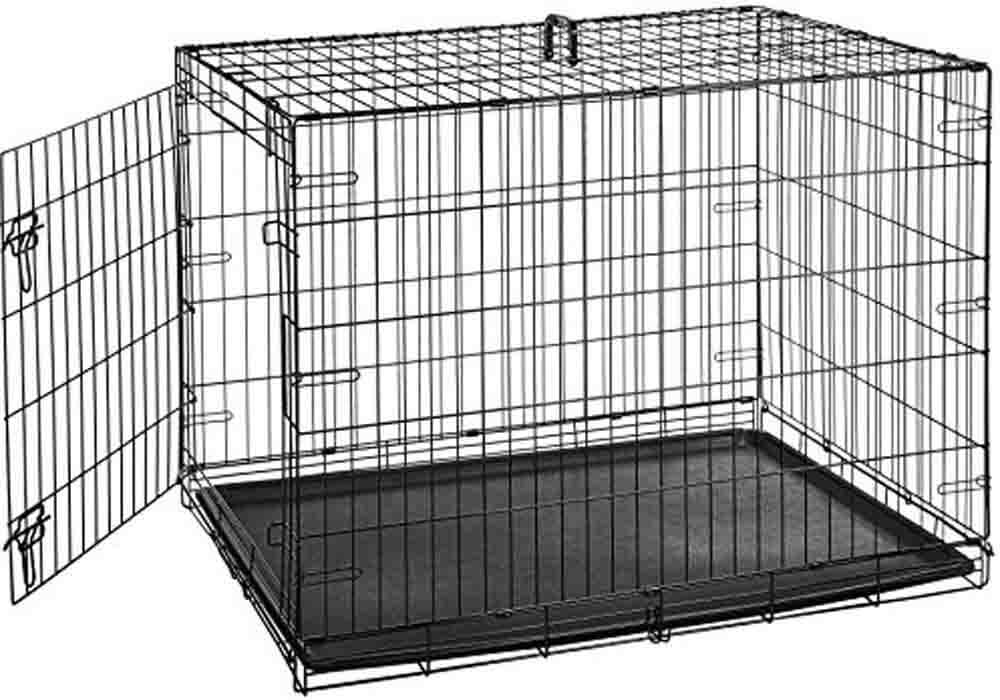
What Size Crate Does a Neapolitan Mastiff Need?
The first step in crate training, regardless of the breed, is getting the right size of the crate.
Neapolitan Mastiff is a giant breed with substantial girth and a large head. That's why it can be tempting to get large crates to save up on costs. But other than savings, it serves no other purpose, and may even render your training useless.
The recommended crate size for an adult Neapolitan Mastiff is 54 inches (137 cm). But when crate training a puppy, you'll only need the one with enough space for him to sit, lie down, and rollover.
If you want to be super strict with your training, you can start with a 42-inch (106 cm) crate, then move up to 46 inches (116 cm), 48 inches (121 cm), then 54 inches (137 cm) as he grows. You'll need to change at least four times until your dog reaches adulthood, which may not be ideal for a lot of breeders. That's why some start with 46, then replace it with 54.
The crate's size will play a vital part when potty training your puppy, so be sure to pick the right size, then upgrade it as he grows. Once you have it, you can focus on the steps that will make crate training more relaxed and manageable.
Pro-tip: Neapolitan Mastiff anxiety, aggression, destructive chewing, jumping up, fearfulness, and other behaviors can be controlled with the right training program.
Here’s a great course that
addresses these issues along with many other dog training basics: Check it out now!
How to Crate Train Your Neapolitan Mastiff
Crate training a Neapolitan Mastiff doesn't have to include strenuous tasks. Sure, they can't memorize commands as quickly as other breeds, but with proper routine and patience, your dog can still perfect it.
Here’s our 5 easy steps…
1. Gradually Introduce the Crate
No dog would like the idea of being locked up in a cage, but that's how your dog would interpret it, if you bought a crate, then force him to stay inside. It'll be easier for you and your dog if you can introduce it gradually, then increase the time he spends in it as he gets more comfortable.
Make the crate look encouraging for him, then
let him sniff, bite, and inspect it. This process of letting your dog be in a
"getting-to-know" stage is crucial in making the crate a comfortable
place for him to stay.
2. Create a Positive Association
One reason why a lot of dogs fear the idea of getting inside a crate is because they've associated it with negativity. But if you're able to make him feel comfortable and use it as a place where he eats, then he'll start to develop a positive association with his crate.
Placing the food inside is how you should do
it, but your dog may not be comfortable with it at first. So start by putting
the bowl near the door, then gradually move it inside as your puppy becomes at
ease.
3. Close the Door While Eating
After making him feel comfortable with the crate and the idea of finishing his meals inside, you'll want to start training him to stay longer. Feeding is the first step, but if you've noticed that your puppy no longer has hesitations when entering the crate, you can start closing its door.
For starters, you can close the door while he's eating, then open it up as soon as he finishes his meal. Gradually increase the time he spends inside the crate, but never push it too far.
Dogs, especially Neapolitan Mastiffs, will
whine because they prefer large spaces. If it happens for the first time, let
him out, but when it happens again the next day, keep him inside longer. You
don't want your dog to have the false association that whining means you'll
open the door.
4. Extend Crate Time Beyond Mealtime
In about four weeks, your dog's opposition and hesitation with his crate will dwindle. By this time, you can try to extend his time inside, before and after meals.
Your dog gets stressed if you leave him alone
as soon as he's inside, so stay close for a few minutes until he becomes
comfortable. Let him get used to the idea of staying inside the crate
alone.
5. Keep Things Normal
Neapolitan Mastiffs want large spaces, but they're laid-back and relaxed. So with proper training, your dog will be okay in spending some time inside the crate.
When you get home, though, his excitement will always go through the roof. That's because Neapolitan Mastiffs are loyal and eager to please their owners. So it's crucial to keep things normal and ignore any behavior that he shows.
Sit beside or in front of the crate for a few
minutes. Don't open the door or even touch it. You don't want your dog to have
the wrong interpretation that your arrival means getting out of the
crate.
Pro-tip: Neopolitan Mastiff's (and their owners) love dog crates…and for good reasons. Crates keep dogs from mischief while you're away, are perfect for house training, for traveling by car, and provide the dog a place to de-stress. Check out the best Mastiff crates on Amazon.com now.
Recommended Dog Crates for Neapolitan Mastiffs
The key to successful crate training is finding the right size, then using it to follow a strict routine. Neapolitan Mastiff is a heavy-boned breed, packed with explosive power. Even puppies may be too intense for most crates in the market, making it harder to find the best for your dog.
Here's a quick list of the crates that we recommend when crate training a Neapolitan Mastiff:
LUCKUP Dog Crate from Amazon.com
This is one of the few crates worth splurging on! It has the most robust construction that we've seen and can withstand the explosive strength of this breed. It comes in different sizes allowing you to upgrade without changing the look and feel of your dog's special place.
MidWest Homes Dog Crate from Amazon.com
This is, perhaps, the best well-rounded crate that you can buy. It has the perfect size and weight, making it easier for you to transport your dog. It doesn't have the strength of LUCKUP, though, so you have to be careful and gradual if you'll use it to train your dog.
Richell Expandable Pet Crate from Amazon.com
This option is what we consider the Rolls Royce of crates. It's not cheap, but it'll save you from the cost of buying another crate when you need an upgrade. It expands from 35 inches (88 cm) up to a massive 66 inches (167 cm), which is more than enough even for adults.
Neapolitan Mastiff Crate Training...Conclusion
Crate training is a crucial step to raise a well-mannered Neapolitan Mastiff. It'll take 4 to 12 weeks for your dog to be comfortable with staying inside a crate. Improper training can lead a puppy to fear crates and see it as a form of punishment. But if you can do it correctly, it'll be the best tool that you can use to keep your friend in check.
A well-trained dog will even see it as his
personal space that he can go to when he wants to relax. Just remember, there's
no shortcut with crate training, but you can make the process easier for you
and your dog.
Return to the top of this Neapolitan Mastiff Crate Training page

About the Author...
Ken Alden, a dedicated Mastiff owner for over eight years, is acclaimed for his expertise in care, grooming, and training. Read more About Me and my dog Shadow.
- Mastiff Guide Home ›
- Neapolitan Mastiffs ›
- Neapolitan Mastiff Crate Training
